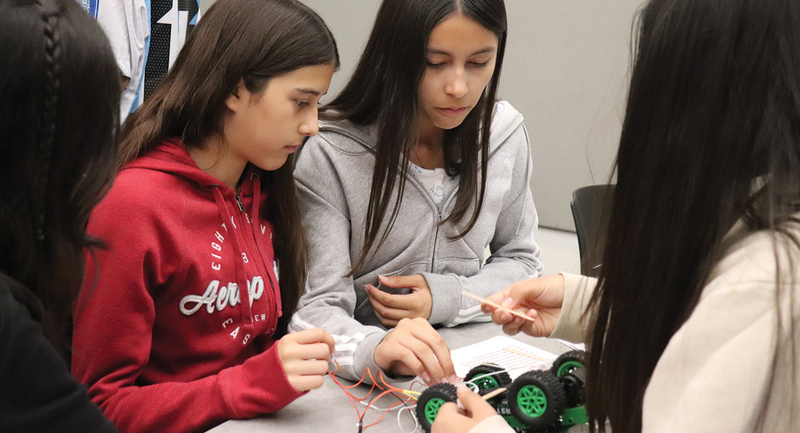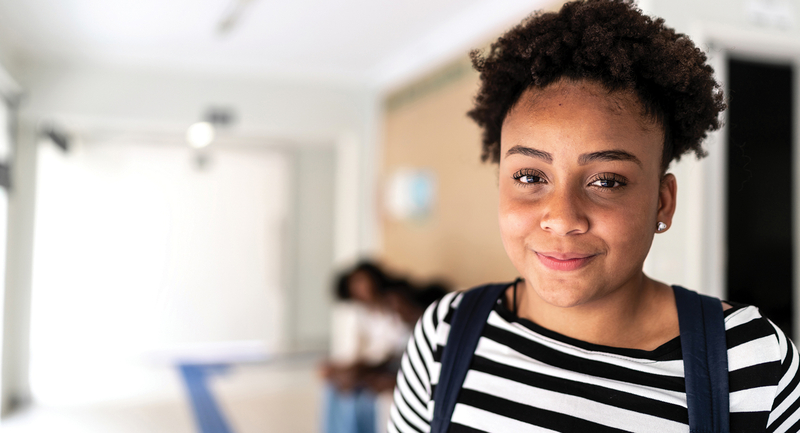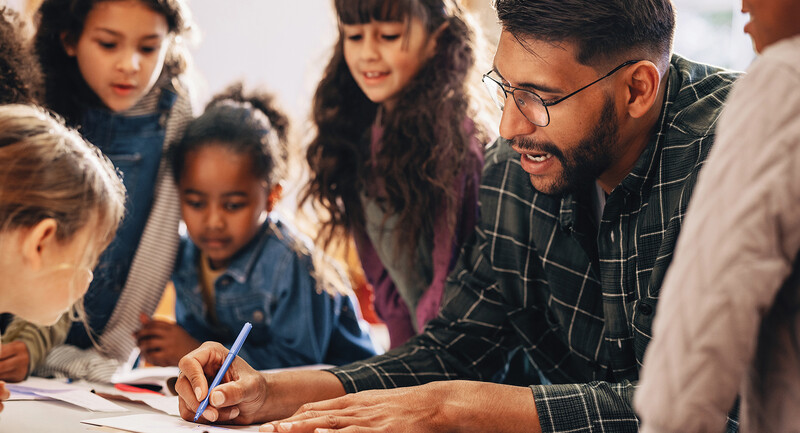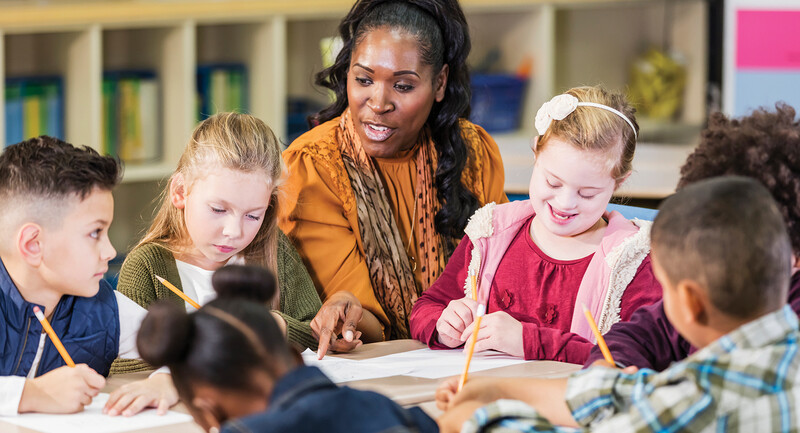In-person learning debates have reached a fever pitch in the past several months. Vocal majorities of parents from California to Chicago want their children back in school instead of in hybrid or remote learning models, with teachers' unions arguing over returns. A March Gallup poll reports 79 percent of parents favor an in-person approach, even as one in three students still learn at home.
But the reality is much more complex. This year's switch has revealed new possibilities for educating students and exposed in harsher light the systemic inequities that existed in schools long before the pandemic. These inequities should make us question the traditional approach we've used to teach young people. In fact, barring sweeping changes to the way schools are run, in-person learning isn't necessarily the best for all students.
Recent data shows that there is a racial divide between the parents who want in-person learning and those who prefer remote learning. According to a study conducted by the CDC in December 2020, only 46 percent of Black families and 50 percent of Latino families felt comfortable sending their children back into school buildings. For white families, that number was 62 percent. In New York City, where I teach, at least half of parents citywide opted in for remote learning this year. Though white families make up the minority in city schools, they represent the largest group of families who chose in-person learning this past year. Many of my own parents of color chose at two separate points to keep their children remote.
The reasons why Black families, in particular, do not feel comfortable with in-person learning go beyond the health disparities and fears of infection. Fear of what renowned scholar Ladson-Billings calls "a special kind of violence" contributes to parents' discomfort with sending students back to school. According to Ladson-Billings, "Black families are keenly aware that school was not the haven of comfort and safety that some professionals try to pretend they are. Yes, some children live in unsafe and unstable homes, but rather than solve their problems, some students find that school exacerbates their problems." Black families who spoke to Mother Jones in March echoed those same fears, citing a "long history of racism in public schooling" and systemic racism in the medical field.
A History of Pain
For many students from marginalized communities, classrooms are the cause of pain and trauma, not the antidote. Students of color have often experienced compliance, discrimination, and microaggressions at school, such as being harshly punished for the way they dress, style their hair, or speak. Disproportionately higher rates of suspension and disciplinary actions for Black and Latino students are well-documented. Students of color often do not have access to culturally responsive curriculum, forcing them to engage with Eurocentric content that erases their culture and identity.
In schools that don't approach instruction from a trauma-informed lens, students who struggle with housing or food insecurity may be misunderstood when they do not participate in expected ways. Further, many students with disabilities or those learning English for the first time face structural barriers like tracking, lack of appropriate curriculum, and proper supports that prevent them from feeling like a real part of the school community. For many of these students, being back in person may mean more of the same issues.
The overwhelming majority of my students have told me that their feelings about returning to school are complicated. Janelle expressed that she was happy at home: "I'm shy and I feel like I always got bullied in my last class. Online, everyone is nice and my friends and I talk on Google Chat." Jacob shared with the class, to my disbelief, "I used to get in trouble all the time in school, but because of remote learning, I can just focus on getting my work done."
During family and teacher conferences, his parents echoed that sentiment, saying they were relieved that the school wasn't calling them to report his behavior and he finally got a fresh start. Another of my students, Luna, shared that she often felt unsafe in school because of her identity and that though she liked school, she didn't miss feeling unwelcome: "I've gained interest in a lot of things, I've started writing a lot, and made friendships. I've been helping a lot of people online and sharing my art with them!"
Their experiences make clear that we do not meet students' social and emotional learning needs simply by returning to in-person learning. This approach is a Band-Aid on a system that has long ignored the needs of students of color, students with disabilities, English language learners, and children in rural and poor communities. In-person learning may better students' academic chances and offer some needed supports, but what about the ways in which their mental, emotional, and social health are worsened by being in a school building?
A Chance to Start Fresh
To make in-person learning work for our marginalized students, school leaders must radically rethink their focus. What students need now is not more testing or more culturally insensitive curriculum. They need to return to schools ready to actually care for them and meet their unique emotional and social needs. This means implementing targeted and sustainable changes now.
The first step school leaders need to take is devising and implementing a plan that addresses social and emotional equity with an antiracist lens. This entails examining the social and emotional learning curriculum in the school, if there is one, and determining if that approach is trauma-informed and culturally responsive.
This year, my school has been focusing on finding an SEL curriculum that is trauma-informed and antiracist. Rethinking everyday classroom practices that are actually harmful to students means changing school policy as well as making time for teachers to discuss and reexamine daily instruction and interactions. Schools need to make sure that this work takes place with the input and guidance of students from marginalized communities and their families to ensure equitable participation by those most affected.
Another step that schools can take is resisting the urge to assess and remediate academically. Students don't need problematic standardized exams further distressing our students or longer school hours. We need to understand the deep emotional and social impact that the past year has had on them. If a child is hungry or physically in pain, they cannot learn; this is exacerbated further when a child has lost a loved one or is afraid of losing someone (which, due to COVID-19's racial health disparities, is much more likely the case for our Black and Latino students).
It's important to address the historical deficit-framed approach of viewing Black and Latino students as "failing" or "at-risk," both on a personal and school-wide level. We can do this by adopting culturally responsive curriculum and assessment that nurtures students of color and focuses their assets and strengths. Students need assessment practices that illuminate their brilliance and focus on what they are learning.
Furthermore, schools need to prioritize the proper mental health support and training in trauma-informed practices. For instance, New York City has the largest school police force in the nation (over 5,000 school safety officers), with a proposed budget to spend $20 million more this year on expanding the force. This is funding that could instead be spent on hiring much-needed mental-health support staff and funding trauma-informed instructional measures. Instead, the city has frozen city funding for guidance counselors and social workers. When the largest school district in the country only has 3,000 guidance counselors and 1,800 social workers to serve almost 1 million students in the middle of a pandemic, the return to in-person learning will not be a successful one.
Teachers will need to understand the many ways trauma affects children, including what behaviors may signal a student is in crisis, as well as ongoing resources (support personnel, professional development, and their own mental health breaks) to make sure students get the help they need.
Without addressing the needs of our most marginalized students, academic success is inconsequential. If we continue to ignore those needs, the scars that students will hold for the rest of their lives will be emotional ones.







